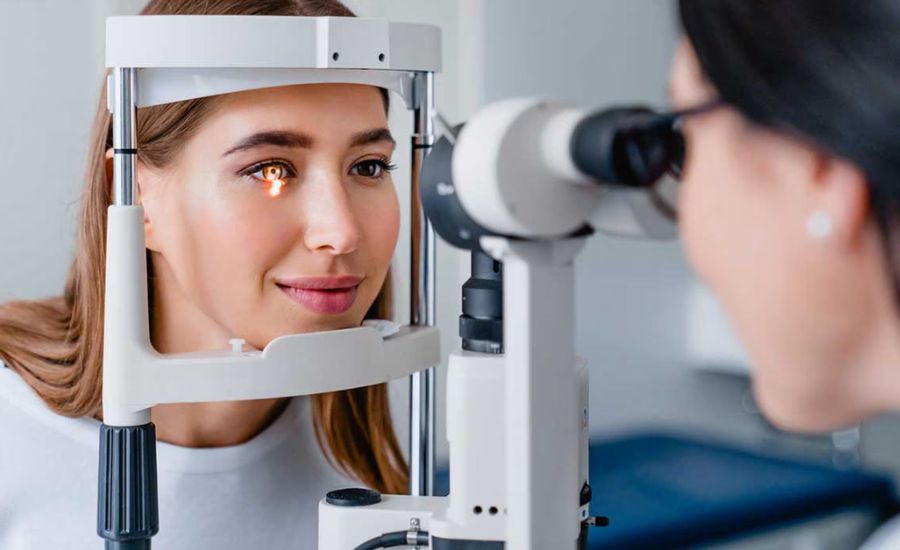Eye exams are used to maintain eye health and support clear vision. During these exams, optometrists use various tests. Each test evaluates different aspects of vision and eye health. Understanding these tests can make the experience smoother and more informative. This applies whether you visit for a routine check or to address specific vision concerns.
1. Visual Acuity Test
A visual acuity test measures how well you see at different distances using a standardized eye chart with rows of letters in smaller sizes. You’ll cover one eye and read the letters aloud, then repeat with the other eye. This test checks your vision sharpness and helps the optometrist decide if you need glasses or contacts. Results are shown in the 20/20 format, with variations indicating vision issues like nearsightedness or farsightedness. This is typically the first step in eye exams.
2. Refraction Test
The refraction test is used to determine your ideal lens prescription. This test measures how light bends (or refracts) as it enters your eye. Your optometrist will use a phoropter device, asking which set of lenses provides the clearest image. The goal is to find the exact lens combination that fine-tunes your vision. This test is needed for anyone who uses glasses or contact lenses so that the accuracy of your prescription can be optimized for visual clarity.
3. Slit-Lamp Examination
A slit-lamp examination provides a closer look at the structures at the front of your eye, including the cornea, iris, and lens. The test helps screen for cataracts, corneal damage, and dry eye syndrome. The optometrist shines an intense light onto your eye while examining it under magnification. You may be asked to look in specific directions so the doctor can examine different parts of the eye. This test is key to identifying early signs of eye conditions that could affect your vision or eye health in the long term.
4. Glaucoma Screening (Tonometry)
A glaucoma screening measures the pressure inside your eye, known as intraocular pressure (IOP). Elevated IOP is a risk factor for glaucoma, a condition that can damage the optic nerve and impact vision. Several methods are available for this test, but one common approach involves a puff of air directed at your open eye. Another option is to use a small device gently touching the eye’s surface to measure pressure. This test is significant for adults, as glaucoma often develops with age and may not show symptoms until significant damage occurs.
5. Retina Examination (Ophthalmoscopy)
The retina examination allows your optometrist to assess the health of the back of your eye, including the retina, optic nerve, and blood vessels. It detects conditions like macular degeneration, diabetic retinopathy, or retinal detachment. To conduct this test, the optometrist may dilate your pupils with eye drops. Once the drops take effect, they’ll use a special tool to examine the internal structures under magnification and light. This test is typically performed toward the end of eye exams and provides information about overall eye health.
Explore the Importance of Eye Exams
Eye exams are used to identify vision issues and maintain the health of your eyes. From checking clarity with a visual acuity test to evaluating the condition of your retina, each test contributes to a comprehensive assessment. If it’s time for your next eye exam, contact your local optometrist for an appointment. Regular eye exams can help detect potential problems early and keep your vision sharp for years.
Read Next: celebriches

Jennifer David is the creative force behind CelebRiches, your go-to source for celebrity financial exploits. With an unwavering passion for the entertainment industry, she delivers in-depth insights into celebrities’ net worth, combining thorough research with a captivating narrative. Explore the stars’ fiscal journeys through Jennifer’s expert lens, where finance meets fame most engagingly.
